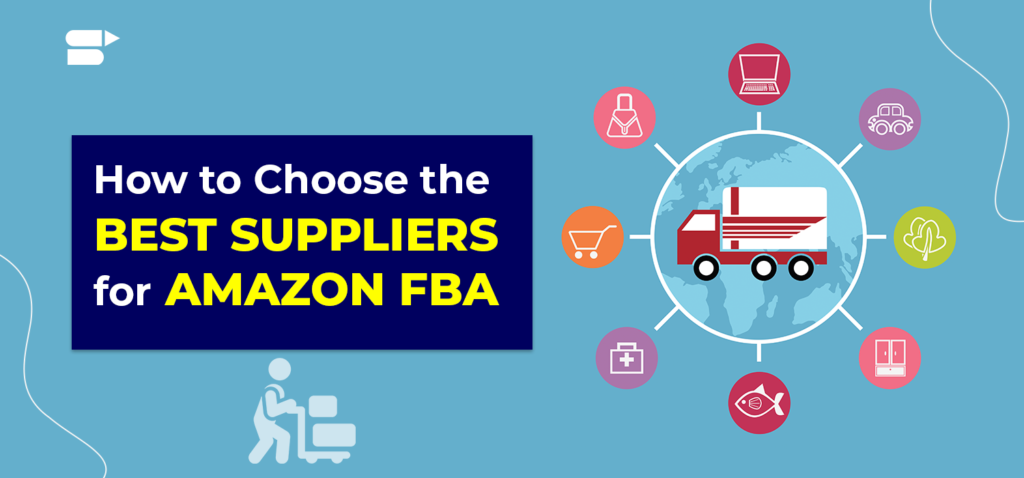
Introduction
Amazon FBA (Fulfillment by Amazon) has revolutionized eCommerce, allowing sellers to focus on scaling their business while Amazon handles storage, shipping, and customer service. For entrepreneurs looking to maximize profits, wholesale sourcing is a powerful strategy that can lead to sustainable business growth. In this comprehensive guide, we’ll explore how to master Amazon wholesale, find the best suppliers, and scale your store to new heights.
Mastering Amazon Wholesale: A Step-by-Step Guide for Sellers
Wholesale selling on Amazon involves purchasing bulk products from suppliers at a lower cost and reselling them on the platform for a profit. Here’s how to get started:
1. Create an Amazon Seller Account
- Choose a Professional Seller Account to access wholesale benefits.
- Register for Amazon FBA to leverage fulfillment services.
- Ensure compliance with Amazon’s policies.
2. Research Profitable Wholesale Niches
- Use tools like Jungle Scout, Helium 10, and Keepa to analyze product demand.
- Look for products with consistent sales and minimal competition.
- Consider seasonal trends and market saturation.
3. Find Reputable Wholesale Suppliers
- Use wholesale directories such as SaleHoo, Worldwide Brands, and ThomasNet.
- Attend trade shows like ASD Market Week and Global Sources.
- Contact manufacturers and distributors directly for bulk pricing.
4. Establish Relationships with Suppliers
- Negotiate bulk discounts and flexible payment terms.
- Request samples before committing to large purchases.
- Build long-term partnerships for consistent inventory supply.
5. List and Optimize Your Products on Amazon
- Use high-quality images and detailed product descriptions.
- Implement SEO-friendly keywords to enhance discoverability.
- Optimize pricing using Amazon’s Automated Repricing Tool.
Amazon Wholesale Success: How to Build a Profitable Business
Scaling an Amazon wholesale business requires strategic planning and execution. Here’s how you can optimize your operations for profitability.
1. Leverage Amazon FBA for Efficiency
- Store products in Amazon’s warehouses to reduce operational costs.
- Offer Prime-eligible products to attract more customers.
- Let Amazon handle returns and customer service.
2. Price Products Competitively
- Monitor competitors’ prices using automated repricing tools.
- Adjust pricing to maximize profit margins while staying competitive.
- Take advantage of Amazon’s discount and deal programs.
3. Implement a Data-Driven Inventory Strategy
- Avoid overstocking or understocking by using inventory management software.
- Track sales data to forecast demand and adjust purchasing plans.
- Use Amazon’s Restock Recommendations for inventory planning.
4. Utilize Amazon PPC Advertising
- Run targeted Sponsored Product Ads to boost sales.
- Optimize ad spend by focusing on high-converting keywords.
- Monitor ad performance and adjust campaigns accordingly.
Wholesale Sourcing for Amazon FBA: Maximize Your Profits
Finding the right products and suppliers is crucial for profitability. Here’s how to source wholesale products effectively.
1. Criteria for Selecting Wholesale Products
- High Demand: Look for products with consistent sales and positive reviews.
- Low Competition: Avoid oversaturated niches dominated by major brands.
- Strong Profit Margins: Ensure at least a 30% ROI after Amazon fees.
- Reliable Suppliers: Partner with wholesalers offering consistent stock and fast shipping.
2. Best Platforms to Find Wholesale Suppliers
- Alibaba – Connects sellers with global manufacturers.
- SaleHoo – Provides a vetted directory of wholesalers.
- Wholesale Central – A free directory for U.S.-based wholesalers.
- Direct Manufacturer Deals – Reach out to brands for bulk purchasing.
3. Negotiating with Suppliers
- Bulk Discounts: Order larger quantities for lower prices.
- Exclusive Deals: Secure distribution rights for specific products.
- Flexible Terms: Negotiate better payment terms to manage cash flow.
Finding the Best Amazon Wholesale Suppliers: A Complete Guide
Establishing reliable supplier relationships is essential for long-term success. Here’s how to find and evaluate top suppliers:
1. Where to Find Reliable Suppliers
- Online Directories: SaleHoo, Worldwide Brands, and Global Sources.
- Industry Trade Shows: ASD Market Week, Canton Fair, and White Label Expo.
- Amazon’s Wholesale Program: Apply to buy directly from manufacturers.
- Distributor Networks: Work with authorized brand distributors.
2. Evaluating Suppliers for Long-Term Success
- Verify Business Legitimacy: Check business licenses and customer reviews.
- Assess Communication Quality: Ensure clear and timely responses.
- Request Samples: Test product quality before placing bulk orders.
- Check Supply Chain Stability: Ensure they can meet your demand consistently.
Amazon FBA Wholesale: How to Scale Your Online Store
Scaling an Amazon FBA wholesale business requires automation, strategic expansion, and consistent reinvestment.
1. Automate Operations for Efficiency
- Use inventory management tools like RestockPro or InventoryLab.
- Implement repricing tools like Bqool to stay competitive.
- Set up automated reorder alerts to avoid stockouts.
2. Expand Your Product Catalog
- Identify new product opportunities using data analytics tools.
- Diversify across different categories to mitigate market risks.
- Consider adding private label products alongside wholesale items.
3. Optimize Fulfillment and Logistics
- Leverage multi-channel fulfillment (MCF) for non-Amazon sales.
- Partner with third-party logistics (3PL) providers for added flexibility.
- Explore Amazon’s Global Selling program to reach international customers.
4. Strengthen Brand Presence and Customer Trust
- Encourage positive reviews through follow-up emails.
- Offer top-tier customer support to build brand loyalty.
- Maintain high seller ratings to qualify for Amazon’s Buy Box.
Conclusion
Scaling an Amazon FBA wholesale business requires a combination of smart sourcing, strategic pricing, and efficient fulfillment. By mastering Amazon wholesale, sourcing profitable products, and building strong supplier relationships, you can create a sustainable and profitable eCommerce business. Implement the strategies outlined in this guide to grow your store, maximize margins, and achieve long-term success on Amazon.
